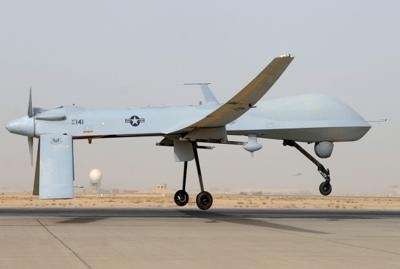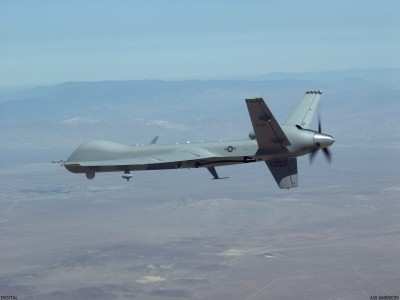Tue, Aug 13, 2013
CAE USA To Provide Classroom, Simulator, And Live Flying Instruction
The U.S. Air Force has awarded a contract to provide comprehensive Predator and Reaper remotely piloted aircraft (RPA) aircrew training services to CAE. Under terms of the contract, which was awarded as a one-year base contract for approximately $20 million with four one-year options, CAE USA will provide classroom, simulator, and live flying instruction as well as courseware development in support of the MQ-1 Predator and MQ-9 Reaper training programs. Training will be delivered at four USAF bases where approximately 1,500 MQ-1/MQ-9 pilots and sensor operators train annually. The contract was awarded in CAE's second quarter of fiscal 2014.

CAE USA will provide fully qualified instructional staff to conduct academic as well as live flying instruction at Holloman Air Force Base (AFB), New Mexico; Creech AFB, Nevada; March Air Reserve Base, California; and Hancock Field Air National Guard Base, New York. MQ-1/MQ-9 Predator/Reaper aircrews will receive training for initial qualification, refresher/recurrent training, and instructor qualification. In addition, CAE USA will provide courseware development services, primarily at the formal training schoolhouse located at Holloman AFB, as well as implement a new learning content management system.
"The use of unmanned and remotely piloted aircraft is playing a much more prominent role in military operations, and this requires highly trained and mission-ready aircrews," said Ray Duquette, President and General Manager, CAE USA. "We are pleased the U.S. Air Force has recognized CAE USA's aircrew training services expertise and capabilities, and we look forward to supporting the combat readiness for the USAF's Air Combat Command Predator and Reaper aircrews."
The MQ-1 Predator and the MQ-9 Reaper are armed, multi-mission, medium-altitude, long-endurance remotely piloted aircraft that are employed primarily as an intelligence-collection asset and secondarily against dynamic execution targets. Given their significant loiter time, wide-range of sensors, multi-mode communications suite, and precision weapons, these unmanned aerial vehicles provide a unique capability to perform coordination, reconnaissance and strike missions against high-value, fleeting, and time-sensitive targets.

More News
He Attempted To Restart The Engine Three Times. On The Third Restart Attempt, He Noticed That Flames Were Coming Out From The Right Wing Near The Fuel Cap Analysis: The pilot repor>[...]
Make Sure You NEVER Miss A New Story From Aero-News Network Do you ever feel like you never see posts from a certain person or page on Facebook or Instagram? Here’s how you c>[...]
From 2009 (YouTube Edition): Leading Air Show Performers Give Their Best Advice for Newcomers On December 6th through December 9th, the Paris Las Vegas Hotel hosted over 1,500 air >[...]
Aero Linx: NASA ASRS ASRS captures confidential reports, analyzes the resulting aviation safety data, and disseminates vital information to the aviation community. The ASRS is an i>[...]
“For our inaugural Pylon Racing Seminar in Roswell, we were thrilled to certify 60 pilots across our six closed-course pylon race classes. Not only did this year’s PRS >[...]
 NTSB Final Report: Rutan Long-EZ
NTSB Final Report: Rutan Long-EZ ANN FAQ: Turn On Post Notifications
ANN FAQ: Turn On Post Notifications Classic Aero-TV: ICAS Perspectives - Advice for New Air Show Performers
Classic Aero-TV: ICAS Perspectives - Advice for New Air Show Performers ANN's Daily Aero-Linx (06.28.25)
ANN's Daily Aero-Linx (06.28.25) Aero-News: Quote of the Day (06.28.25)
Aero-News: Quote of the Day (06.28.25)




